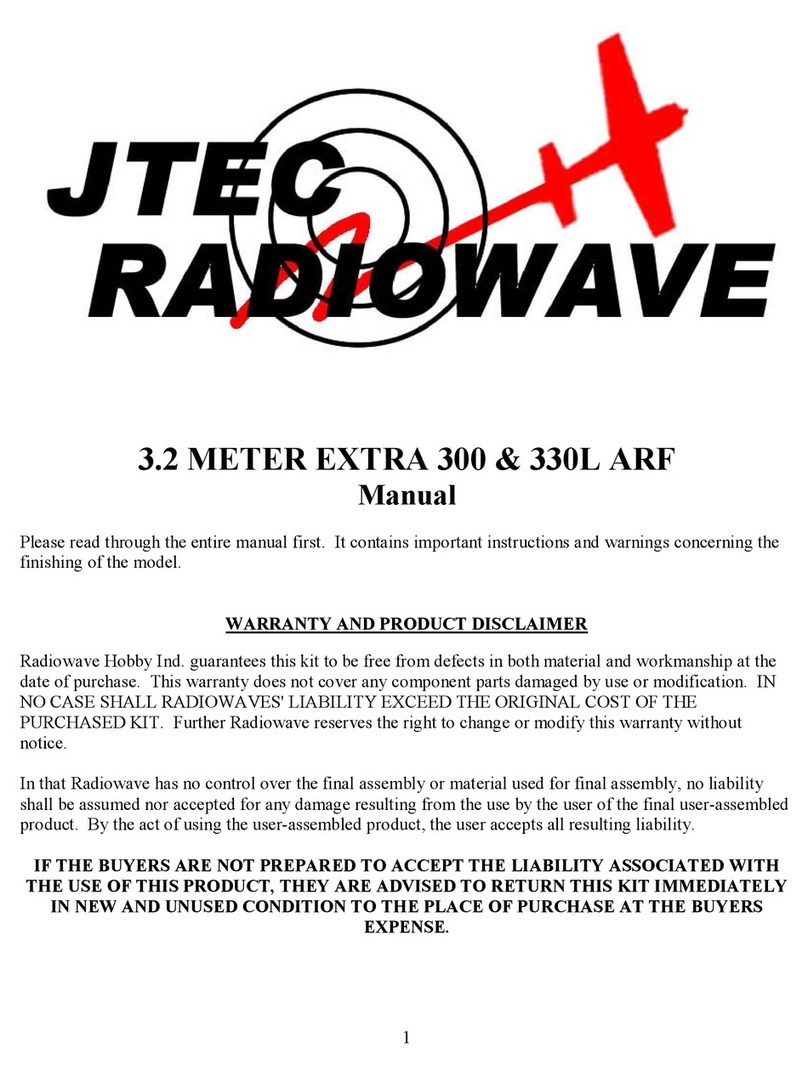
9
Fuselage Sides Assembly
A. Join Fuselage Sides
1. Take a long piece of aluminum angle or straight edge (at least 5 ft. long) and lay
it along the top of the FF side. Tape the FF side to the aluminum bar in 3 or 4
places. Lay a small piece of wax paper where the two fuselages sides will be
joined. Now place a bead of glue on the edge of the AFT side where it will butt
to the other side, and butt in against the forward fuselage side. While the glue
sets, set the top of the fuselage side against the aluminum angle or straight edge,
and tape the AFT fuselage side to the aluminum bar. This assures that the entire
top part of the fuselage is straight.
2. At the splice, make a mark 3/8 “ from the edges of the fuselage sides at the top
and bottom. Place the fuselage splice plate FSP over the joint. Note that the slot
on the splice plate is at the bottom of the fuselage side and also note the taper of
the splice plate so it matches the taper of the fuselage side bottom. Check that
the ends of the splice plate are in line with the 3/8 inch mark you made. If
necessary, sand the top and bottom of the splice plate to match the marks you
made. Prior to gluing the splice plate, make sure that the slot on the splice plate
matches up with the slot on the fuselage side. Now glue the splice plate in place.
3. Make pencil marks perpendicular to the top of the fuselage side at the aft part of
the slots. These marks will help to locate the vertical 3/8 balsa stringers and also
keep them perpendicular to the top fuselage sides. Use a triangle or square for
this operation.
4. Take one 3/8 square balsa stick and splice it to one 3/8 square stick to make a
longeron approximately 82 inches long. Use at least a 45-degree angle to
splice the sticks together. Repeat this procedure 3 more times, so you will have
four 3/8 inch square longerons, approximately 82 inches long.
5. Glue the longerons to the top and bottom of the fuselage sides with aliphatic
resin glue. Take extra care that the longerons at the fuselage top line are
exactly with the top of the fuselage sides.
6. After the glue joints for the top and bottom longerons have dried, install the 4
vertical stringers aft of the slot, and lined up with the line you drew in step 3.
The vertical stringer has one side cut at an angle to match the angle of the
fuselage side. When gluing in this stringers, check that you have the angle of the
stringers lined up properly with the angle of the fuselage side.
7. Glue the aft doubler plate in place. When gluing, align the holes for the stab
tube socket by placing the socket in the holes. After you have aligned the
holes, remove the tube socket so it does not get glued in with the doubler.
8. Cut 3/8 in square balsa cross piece stringers, which will be glued to the bottom
formers BF1, BF2, BF3, and BF4. See plans for correct location of the stringers.
Before gluing in the stringers to the formers, make a copy of each stringer,
which will be used for cross pieces at the tope of the fuselage.




























